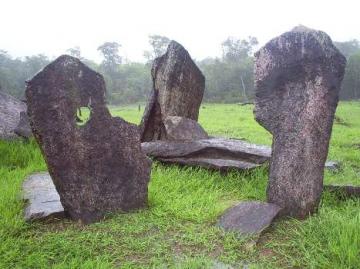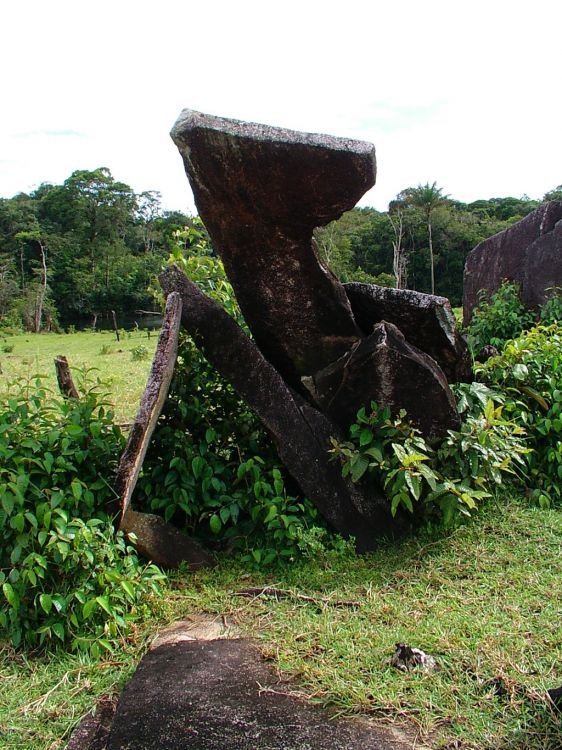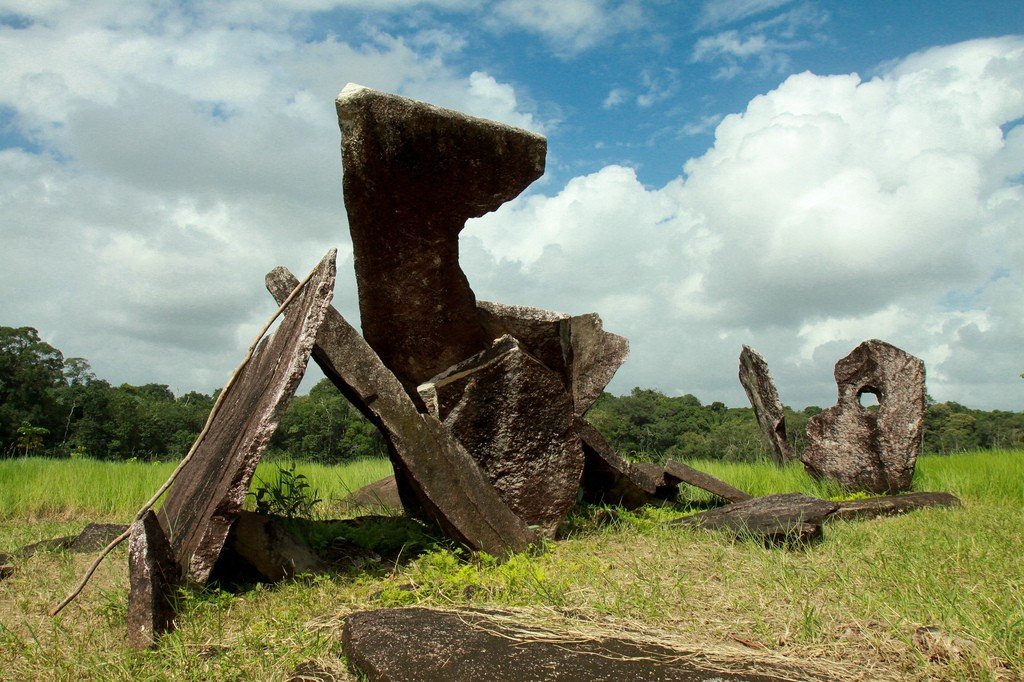Archaeological Park of Sulsticiu (Amazon Stonehenge)
Sulstíciu Archaeological Park is an archaeological complex popular with tourists and historians, located in Brazil near the border with French Guiana. In Portuguese, the park’s name means “solstice”. In the spring of 2006, scientists excavated here and found on top of a grassy hill megalithic monument in the form of cromlech – standing vertically stones.



Video: Sulsticiu Archaeological Park
Highlights
The monument has a diameter of about 30 meters and consists of 127 vertically installed granite steles, whose height reaches 3-4 meters. Similar megalith scientists also found on the territory of French Guiana. Many experts, comparing the monument from Sulstisiu Park with known complexes in different parts of the planet, call it “Amazonian Stonehenge.”
.
Near the granite stones were excavated fragments of ancient pottery. Having analyzed their age, archaeologists concluded that the pottery could have been made in the I-XV centuries AD. Like a similar megalith from French Guiana, the age of the archaeological site from Brazil is about two thousand years old.
.
Hypotheses about the purpose
According to the assumption of scientists, the find is an ancient observatory of the Indians who lived in these places. This conclusion experts made because on the day of the winter solstice, the shadow of one of the sides of the granite cromlech disappears. This happens when the sun rises over the territory of the archaeological park Sulsticiu.
.
However, this version is not the only one. Some experts believe that the granite steles could play the role of an ancient temple in the open air. The priests, oriented on the position of the stars, conducted magical rituals in it. Archaeological excavations are carried out here on a regular basis, but so far scientists have not found significant evidence that would confirm or deny any of the hypotheses.
.How to get there
The Sulstíciu Archaeological Park is located in the municipality of Calsoeni, in the Brazilian state of Amapá, 390 km from the state capital, Macapá. This city can be reached by airplane. Most tourists come to the archaeological park as part of organized sightseeing tours.
.